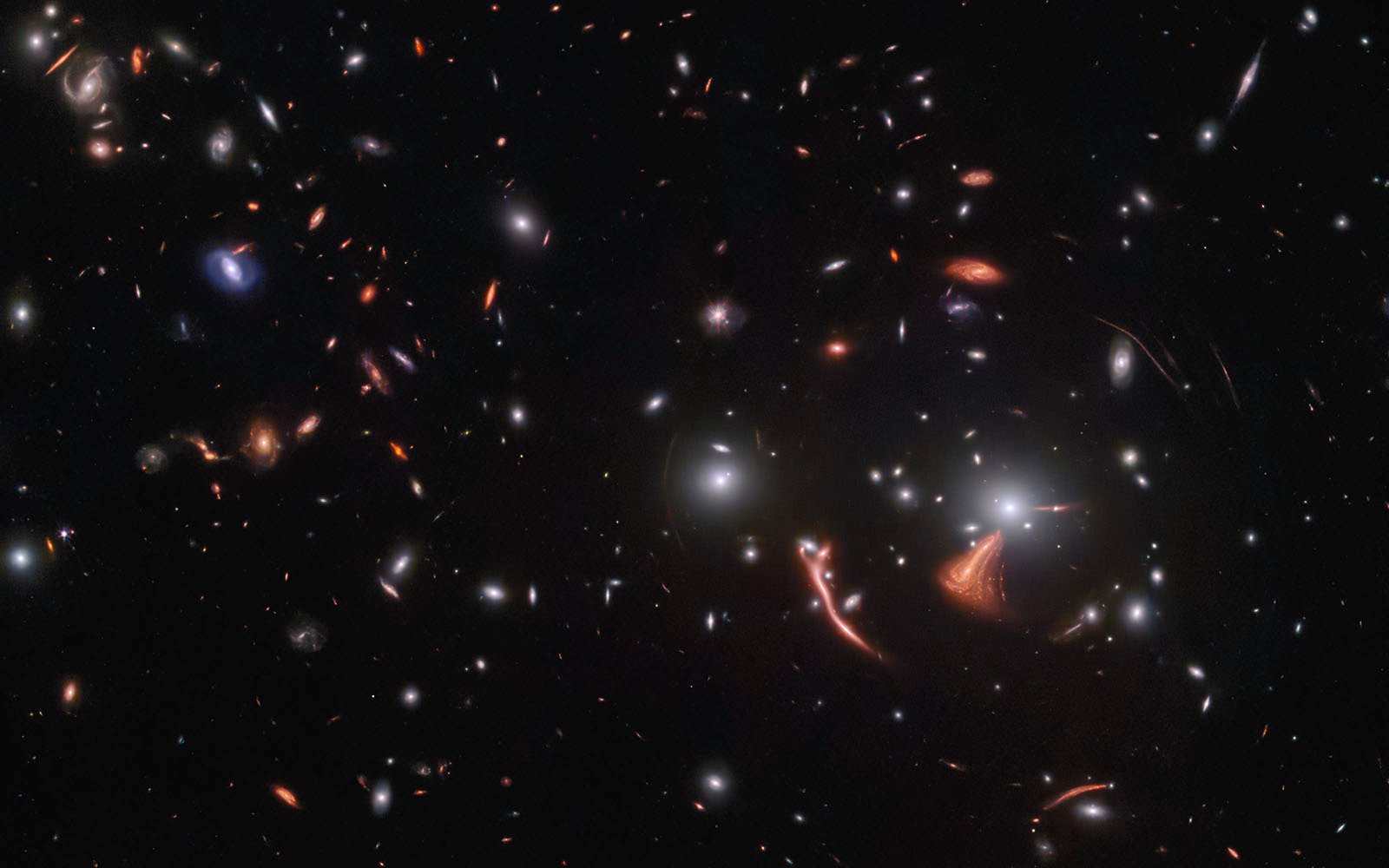Webb’s ‘Cosmic Seahorse’ Photo Shows Gravity Bending Spacetime

One of the first images the James Webb Space Telescope ever captured was only possible thanks to a gravitational lens. Its latest is another example of this phenomenon, this time featuring a galaxy called the Cosmic Seahorse.
The concept of a gravitational lens has been explained by NASA before, but for those unfamiliar, it refers to a method that occurs when a huge amount of matter, like a large cluster of galaxies, creates a gravitational field and distorts and magnifies the light cast from objects behind it.
In short, gravity distorts space to the degree that it makes a sort of “optic” that channels light towards a telescope like Webb or Hubble and allows it to see much farther than it would be able to using only traditional optics.
In this case, Webb was able to capture a photo of the Cosmic Seahorse galaxy by leveraging the gravitational lens created by a galaxy cluster in the foreground. This effect has magnified the distant galaxies, warping their shapes and creating the bright smears of light spread throughout the resulting image, the European Space Agency (ESA) explains.
While light is stretched and “smeared” in the image, the benefit of a gravitational lens makes it so that astronomers can actually study objects that would typically be too far away to see under normal conditions.
“This useful quirk of gravitational lensing has also been used to reveal some of the most distant galaxies humanity has ever encountered. The long, bright, and distorted arc spreading out near the core is one such example,” the ESA says. “A distant galaxy known as the Cosmic Seahorse, its brightness is greatly magnified by the gravitational lens, which has enabled astronomers to study star formation there.”
The photo was captured by Webb’s near-infrared camera, or NIRCam, and the lensing was due to the galaxy cluster SDSS J1226+2149, which lies at a distance of around 6.3 billion light-years from Earth in the constellation Coma Berenices.
“By combining Webb’s sensitivity with the magnifying effect of gravitational lensing, astronomers were able to use this gravitational lens to explore the earliest stages of star formation in distant galaxies. To do so, they relied on earlier studies by the NASA/ESA Hubble Space Telescope, which provided the ‘prescription’ for this gravitational lens,” the ESA says.
This photo was captured as part of Webb’s ongoing use by astronomers to study the formation of new stars in distant galaxies. Astronomers expect Webb’s crystal-clear vision and cutting-edge instruments will provide new insights into star formation in distant, gravitationally lensed galaxies, the ESA explains.
Image credits: ESA/Webb, NASA & CSA, J. Rigby